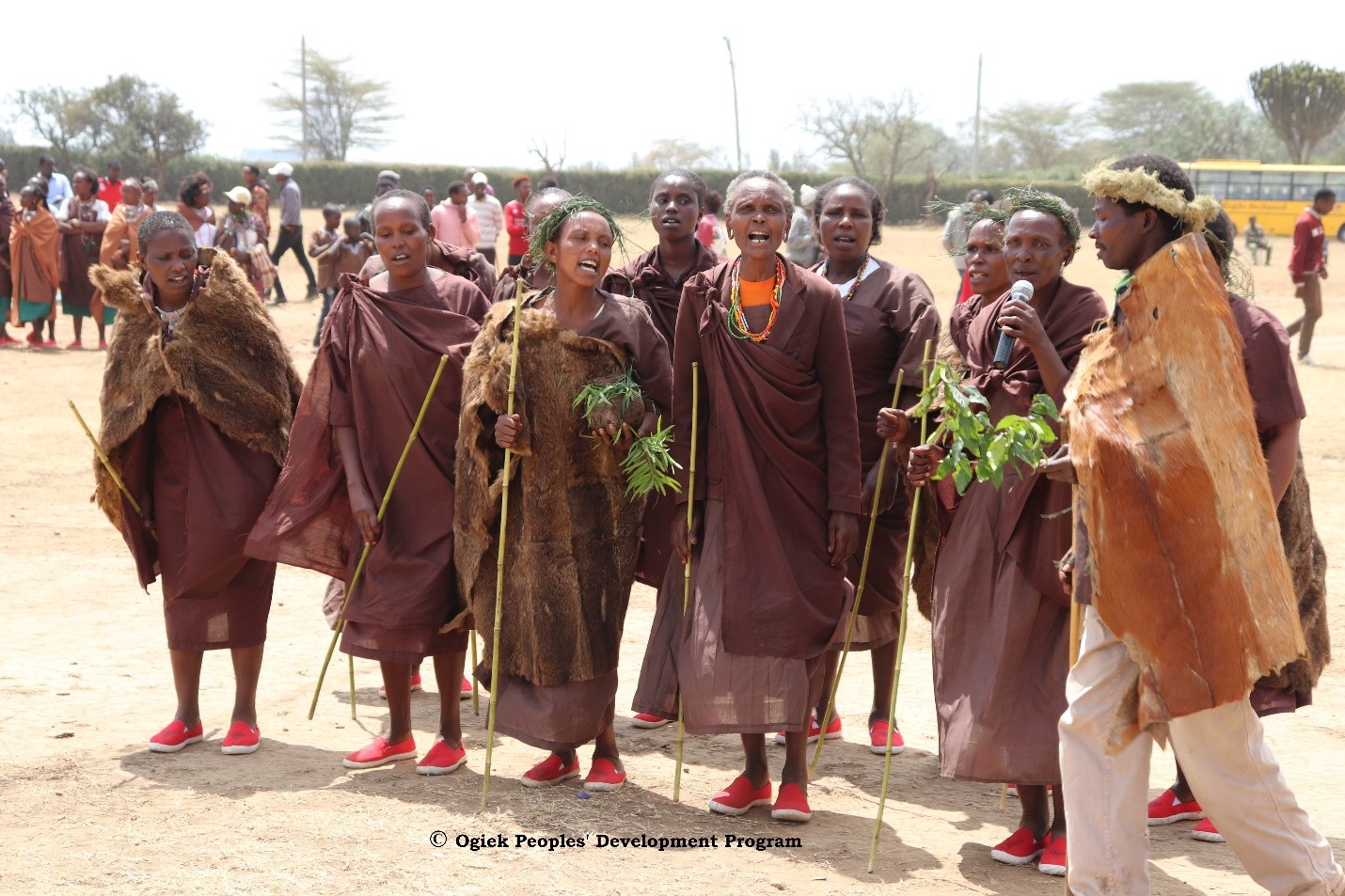
COMMUNITY PROFILE
The Ogiek of Mau occupy the Mau Forest Complex which includes East Mau and South West Mau (Nakuru County), (Maasai Mau) Narok, Baringo, (Koibatek) Kericho, Uasin Gishu and Nandi. Around 40,000 members of the Ogiek community live in the Mau Forest Complex.
The Ogiek community is composed of sub-tribes including Chepkerereg, Morisionig, Kaplelach, Kipchorng’wonek, Kapsapuleg, and Omotik.
The Ogiek are hunters and gatherers and rely mainly on wild fruits, bee keeping and game hunting as a source of livelihood. Animals e.g. hyrax were hunted. The Ogiek lives and sources of livelihood are highly dependent on the forest. Destruction of the forest has however forced the Ogiek to resort to other methods of earning livelihood including small scale farming within the forest. They also largely rely on herbs from the forest as a primary source of medicine. This is partly caused by the fact that they have limited access to modern day health care.
The Ogiek women had the role of constructing houses and they did this using barks of trees and the covers of bamboo trees. The covers of bamboo trees are called teleg. The role of the men was staying a distance away from the family house and watching from a far to spot any enemy that was coming. The Ogiek also settled in caves. Caves were mainly as a settlement used when the community was in transit from the low lands to the highlands. Some caves were valued as spiritual sites where sacrifices would be made to their gods. These caves were known as tororet.
The community made their own clothes made from the skin of wild animals e.g. hyrax (inderit) and the Antelope (poinet). Shoes, Muito were made from hard animal skins and joined using straps for flexibility.
The community passed on information through proverbs, song, riddles and tales. The older members of the community passed morals, norms and traditions from one generation to the next. However, due to lack of documentation, the Ogiek language and culture is slowly eroding and there is need to take more measures to preserve the Ogiek culture.
The Ogiek culture is marked by numerous ceremonies including the burial ceremony. To mark this, the community left a dead body overnight in the forest to be eaten by wild animals. If the body remained intact by morning it was burnt. Apart from that, the family of the deceased would then move and build their homestead in a different location.
Marriage was also practiced in the Ogiek of Mau community and it involved the following steps: identifying a potential bride, engagement, negotiations, payment of bride price and the marriage ceremony.
A couple who had children of each gender was considered blessed, the more children the couple had the more blessed they were perceived. The community also practiced polygamy. Divorce was rare in the Ogiek community.
The naming ceremony is practiced by the Ogiek of Mau community and it involves shouting the names of ancestors until a child sneezes signifying acceptance of that name.
Traditionally, Ogiek had an age set (ipinda) system which bound all the young men together for hunting, honey collection, dancing and other leisure activities. The members of the oldest living age set were and are still considered to be the connecting link between the living and the spirits of the dead.
The Ogiek social organization is composed of clans. Two families or slightly more form a clan (Gaita). A sub-tribe had several clans, each clan had an animal totem, they were to protect this animal and could not hunt it. For example, Kiptieromu clan’s totem was the lion (Ngetuindo) and the Kimeito’s was the elephant. Each clan had its territory headed by an elder appointed from the head of the eldest family. The community had a code where no clan could go hunting to their neighbor’s territory.
The Ogiek have had representation in government overtime since 1992 to date. Some representation has been through Members of County Assembly in different counties including Nakuru County; Benazir Busienei and Maureen Lesingo. In Narok the leaders include Kimursoi. Nandi and Uasin Gishu also have MCAs coming from the Ogiek community. Senator Victor Prengei is a nominated senator and hails from the Ogiek of Mau community. Administrative chiefs including Labolo Sironga have also been part of the leadership of the Ogiek of Mau.
The decision Makers of the Ogiek of Mau also include political leaders, civil society groups, elders, opinion leaders, parents and religious leaders.
A fundamental aspect of the Ogiek of Mau leadership is the Ogiek Council of Elders (Poisioning). The OCE is formed from lineages. Its mandate includes representing the Ogiek community in national matters, settling disputes within the community and granting compensation as per the agreed standards. The OCE is led by the chairman, John Labolo Sironga.

